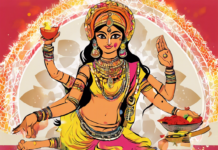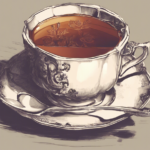Introduction
Dragons have captured the imagination of people for centuries, representing power, wisdom, and magic across various cultures and mythologies. From the fiery beasts of Western legends to the benevolent serpentine dragons of Eastern folklore, these majestic creatures continue to fascinate and inspire us.
Origins of Dragons
Dragons are deeply rooted in myths and folklore around the world. The word “dragon” comes from the ancient Greek “drakōn,” meaning “serpent” or “giant sea fish.” In Western folklore, dragons are often depicted as fearsome creatures guarding hoards of treasure and spewing fiery breath. By contrast, Eastern dragons are viewed as benevolent beings associated with rain, water, and wisdom.
Types of Dragons
-
Western Dragons: These dragons typically have wings, scales, and breathe fire. They are often portrayed as villains in European folklore, such as the infamous dragon Fafnir in Norse mythology.
-
Eastern Dragons: These dragons are more serpent-like and are revered in Eastern cultures. They are associated with good fortune, strength, and longevity. Chinese dragons, for example, are symbols of power and prosperity.
-
Wyverns: Wyverns are dragon-like creatures with two legs and wings. They are common in European heraldry and mythology.
-
Drakes: Drakes are lesser dragons, often portrayed as smaller, less intelligent, and less powerful than true dragons.
The Symbolism of Dragons
Dragons hold symbolic significance across cultures, often representing various qualities and concepts:
-
Power: Dragons are powerful beings, symbolizing strength, courage, and authority.
-
Protection: In many cultures, dragons are seen as protective guardians, keeping evil at bay and safeguarding treasures.
-
Wisdom: Dragons are often associated with wisdom and knowledge, representing the pursuit of enlightenment and spiritual growth.
-
Transformation: Dragons are creatures of change and transformation, symbolizing rebirth, renewal, and personal growth.
Dragons in Popular Culture
Dragons have made their mark in various forms of popular culture, including literature, film, and video games. From J.R.R. Tolkien’s Smaug in “The Hobbit” to the iconic dragons in “Game of Thrones,” these creatures continue to captivate audiences worldwide.
Harnessing the Power of Dragons
While dragons may be mythical creatures, their symbolism can be harnessed in our everyday lives for personal growth and empowerment. Here are some ways to tap into the power of dragons:
-
Embrace Your Inner Strength: Channel the inner strength and courage of a dragon to overcome challenges and obstacles in your life.
-
Seek Wisdom: Emulate the wisdom of dragons by seeking knowledge, learning from experiences, and cultivating your intellect.
-
Protect What Matters: Be a guardian of your values, beliefs, and loved ones, much like a dragon guarding its treasure.
-
Embrace Change: Embrace change and transformation as opportunities for growth and self-improvement, just as a dragon undergoes metamorphosis.
-
Tap into Your Creativity: Dragons are often associated with creativity and magic. Let your imagination soar and unleash your creative potential.
Conclusion
In conclusion, dragons hold a special place in our hearts and minds, embodying traits and qualities that we admire and aspire to. By understanding the symbolism of dragons and harnessing their power, we can embark on a mythical journey of self-discovery, growth, and empowerment.
FAQs
-
Do dragons really exist?
Dragons are mythical creatures that exist only in folklore, literature, and popular culture. While there is no scientific evidence of their existence, dragons continue to capture our imaginations. -
What is the difference between a dragon and a wyvern?
Dragons are typically depicted with four legs and a pair of wings, while wyverns have two legs and a pair of wings. Wyverns are often considered a subtype of dragon in mythology. -
Are dragons considered good or evil in mythology?
The portrayal of dragons as good or evil varies across different cultures and stories. In Western folklore, dragons are often depicted as villains, while in Eastern cultures, they are seen as benevolent beings. -
Can dragons breathe fire in real life?
No, dragons are mythical creatures, and the ability to breathe fire is a fantastical trait attributed to them in folklore and fiction. -
What is the largest dragon in mythology?
One of the largest dragons in mythology is Jörmungandr, also known as the Midgard Serpent in Norse mythology. It is a colossal sea serpent that encircles the world. -
Do all cultures have dragon myths?
Dragons or dragon-like creatures appear in the mythology of many cultures around the world, though their characteristics and symbolism may vary widely. -
Are there any benevolent dragons in Western mythology?
While Western dragons are often portrayed as villains, there are instances of benevolent dragons in folklore and literature, such as Smaug in J.R.R. Tolkien’s “The Hobbit.” -
What is the significance of dragons in Asian cultures?
In Asian cultures, dragons are symbols of power, prosperity, and good fortune. They are revered as celestial beings that bring rain and ensure the fertility of the land. -
Can dragons shapeshift in mythology?
In some mythologies, dragons have the ability to shapeshift into human form or other creatures. This ability adds to their mysterious and magical nature in folklore. -
Are there any real-life creatures that resemble dragons?
While there are no creatures that closely resemble the dragons of myth and legend, some animals like Komodo dragons or flying lizards may have inspired aspects of dragon mythology.








